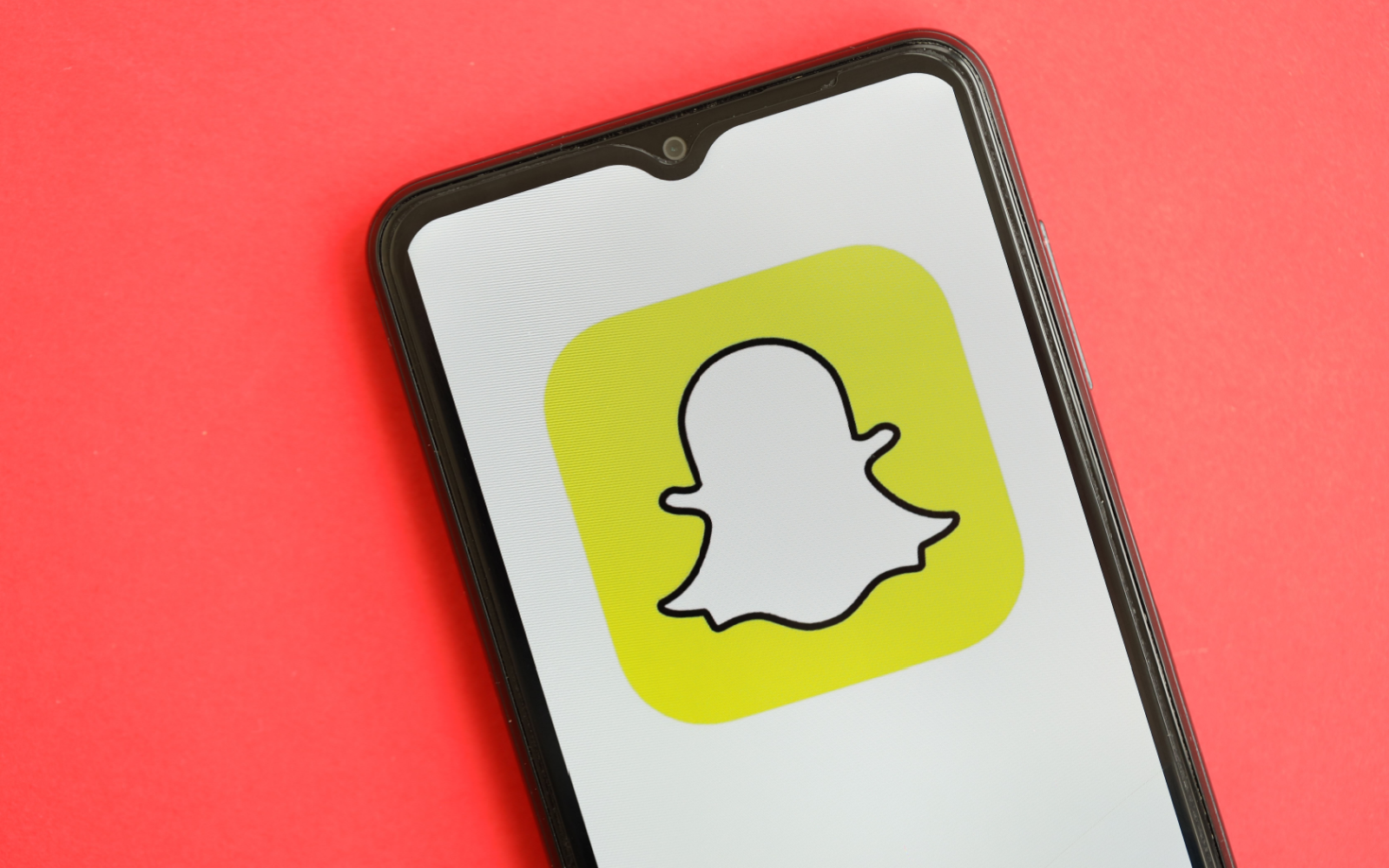7-week influencer marketing strategy template
Marketing teams can’t afford to lose direction when navigating influencer collaborations, hashtag campaigns and content creation. Without a clear strategy when partnering with creators Read more... The post 7-week influencer marketing strategy template appeared first on Sprout Social.
Marketing teams can’t afford to lose direction when navigating influencer collaborations, hashtag campaigns and content creation. Without a clear strategy when partnering with creators and influencers, you risk losing time, opportunity and resources.
That’s where this flexible seven-week influencer marketing plan comes in. It provides a framework with clear milestones and walks you through a process that covers everything from defining your goals to measuring your campaign’s success.
While we’ve structured this influencer marketing plan template into weeks, the actual timing may vary depending on factors like influencer availability and contract negotiations. Use these milestones as a guide and adjust as needed to fit your specific circumstances.
What is an influencer marketing strategy template?
An influencer marketing strategy template guides brands through planning, executing and evaluating influencer collaborations.
It’s a roadmap that helps brands identify their goals, target audience and ideal influencers. Plus, templates offer guidance on creating engaging content, tracking performance metrics and managing relationships with influencers.
Why is a roadmap important? Our 2024 Influencer Marketing report shows 80% of consumers prefer buying from brands with long-term influencer partnerships.
Longer partnerships matter—they build trust through repeated engagement, leading to deeper audience loyalty and more sustained sales growth than one-off posts.
Week 1: Setting a foundation
These initial steps set the stage for a campaign that’s tightly aligned with your goals and primed to deliver measurable results that match your broader marketing objectives.
Identify your goals and objectives
Focusing on clear, strategic objectives yields more impactful results.
Establish both high-level goals and specific, measurable objectives that support those goals. High-level goals represent the broader outcomes you aim for, while specific objectives are the quantifiable steps that help you reach them.
This approach lets you track progress, make adjustments and ensure you’re investing in the right tactics. Examples of high-level goals include:
- Reduce customer acquisition cost (CAC)
- Increase share of voice in your industry
- Get product feedback
- Build brand advocates
- Become a thought leader
While these are common, tailor your goals to your specific challenges. Start by analyzing customer feedback and pinpoint the stages where drop-off or dissatisfaction occurs. Prioritize the goals that target these weak spots.
For each high-level goal, define specific, measurable objectives. For example, if your goal is to reduce CAC, your objective would be to decrease it by 15% over the next quarter through influencer partnerships. Long sales cycle? Use influencers to explain benefits and build trust. Poor retention? Partner with creators to show advanced use cases and boost loyalty.
The most effective influencer strategies address multiple objectives and ensure your marketing efforts hit several targets at once. Start by identifying two key goals and outline the measurable objectives that’ll support them. Ensure your influencer strategy aligns with these priorities.
Define your target audience
The next step is to understand who you’re targeting. Understanding audience nuances informs the influencer tier you should target.
Knowing whether your audience prefers Instagram Stories, YouTube Shorts or TikTok videos, for example, directs you to influencers whose content will resonate.
Defining your target audience goes beyond basic demographics—explore their psychographics: their interests, values, pain points and aspirations.
Once you’ve defined your audience, align them with the right influencer tier:
- Mega-influencers (1 M+)
- Macro-influencers (100K-1M)
- Micro-influencers (10K-100K)
- Nano-influencers (<10K)
Consider the trade-offs between reach and relevance. Mega and macro-influencers offer wide exposure but may lack niche credibility. Micro and nano-influencers boast higher engagement rates and authenticity within specific communities.
For example, a fitness app targeting niche health enthusiasts might partner with micro-influencers to create authentic reviews and tutorial videos, while a national shoe retailer could use macro-influencers for campaigns targeting broader fashion fans.
Create a shortlist of potential collaborators
Building a strong shortlist of influencers requires a multi-pronged approach.
Start with a hashtag search on platforms like Instagram. For example, a search for #HealthyFood on Instagram brings up nutrition experts, food bloggers and wellness advocates already creating content that aligns with your brand.
Don’t shy away from competitive research either. Examine who your rivals collaborate with to understand the landscape and how you can differentiate.
Also, use tools designed for influencer discovery. For instance, Tagger, Sprout’s influencer marketing platform, has a profile discovery tool that offers over 50 search filters to pinpoint creators matching your exact criteria. Precise searches save hours of manual searching and reveal hidden gems.
Other methods to expand your search:
- Use social listening tools to identify emerging voices in your niche
- Employ search engines with specific queries like “top [your industry] bloggers”
- Find out where thought leaders gather on industry-specific platforms
- Use LinkedIn Sales Navigator for B2B influencer discovery
The goal isn’t just to find influencers, but to identify those whose values and audience align with your brand’s vision and goals.
Week 2: Developing your strategy
Week two is about making key decisions to shape your influencer marketing plan and aligning them with overall marketing goals.
Determine your budget
Match your budget to platforms where your audience spends time to ensure smart spending before you partner with influencers. Budget clarity also attracts expert influencers while enabling them to plan content and manage expectations. The 2024 Influencer Marketing Report reveals that 59% of influencers consider a clear budget and payment structure the most important criteria when choosing a brand partner.
Consider factors like audience demographics and engagement levels on each platform. Here’s a breakdown of average influencer pricing across key platforms by per post and followers:
Instagram, Snapchat and TikTok cost about $10 per post per 1,000 followers, while Facebook and YouTube are more expensive at about $20 per 1,000 followers. X (formerly Twitter) is the cheapest on average at $2 per post per 1,000 followers.
If your audience spends most of their time on YouTube, allocate a larger budget for video content production, which is often more expensive than static posts on Instagram.
Once you know where your audience is most active, begin listing potential costs and prioritizing high-engagement platforms to maximize your return on investment (ROI).
Consider these often-overlooked budget factors:
- Content ownership rights: Extended usage significantly impacts costs
- Exclusivity clauses: Preventing influencers from working with competitors comes at a premium
- Creative control: More brand oversight typically means higher fees
- Campaign timeline: Expedited deadlines often incur premium rates
- Campaign length: Long-term partnerships may offer better value
- Number of channels: Cross-platform campaigns increase costs but expand reach
- Influencer tier: Mega-influencers command higher fees than nano-influencers
- Content type: Video content typically costs more than static posts
These factors directly influence your overall costs and ROI. By addressing them early, you ensure your budget aligns with campaign goals and prevents potential obstacles.
Choose influencers based on campaign-fit
Successful partnerships today prioritize authenticity, engagement and alignment with brand values. Prioritize those who embody your brand’s ethos, show creative synergy and have the storytelling ability to weave your message into their content ecosystem.
Consider these factors to find the right influencers:
- Content fit: Does their style match your brand’s look and voice? Look for creators who naturally incorporate your message without disrupting their established style.
- Audience overlap: Focus on psychographic data. An influencer with 70% audience alignment is far more valuable than one with 100% reach but only 30% relevance.
- Partnership history: Choose influencers who’ve improved past brand campaigns with creative ideas.
- Crisis resilience: In an era of cancel culture, pick influencers who can handle negative feedback well and stay true to themselves.
The perfect influencer on paper may not always translate to real-world success. Start with micro-tests or small-scale campaigns to evaluate performance before scaling up. An iterative approach allows you to refine your selection criteria based on actual performance data.
Weeks 3–4: Planning and content development
In weeks three and four, you’ll move from big-picture planning to nailing down the specifics. Finalize timelines, solidify partnerships and co-create content that reflects both your brand voice and the influencer’s unique style.
Create a campaign brief
A campaign brief provides clarity and direction for everyone involved. It aligns expectations and ensures that your internal team and the influencer work towards the same objectives.
To make this step easier, we’ve created an influencer marketing brief template. It covers the essential elements and you can customize it to fit your campaign needs. Download our template to simplify your campaign management and get everyone on the same page from the start.
Make initial outreach
Initial outreach is a crucial step in establishing a relationship with potential influencer partners. It shapes their first impression of your brand and sets expectations for the partnership.
Engage with their content by liking, commenting or sharing to show genuine interest and build rapport. Research their past collaborations and content style to tailor your approach, showing that you’ve done your homework and that you value thoughtful partnerships. Tailoring your approach increases your chances of securing a positive response.
Use influencer outreach email templates or templates for DMs to streamline outbound messages without sacrificing personalization. Scale outreach while creating a thoughtful and customized message.
When discussing compensation, approach influencer rate negotiations skillfully. Offer context about your budget while emphasizing the long-term value of the collaboration.
Aim for a fair partnership that respects their work and matches industry standards. A respectful approach fosters trust and opens doors to a sustainable, mutually beneficial long-term relationship.
Coordinate content creation
Influencers know their audience well. And 65% even want early involvement in creative and product discussions since they’re aware of their audience’s interests, preferences and pain points.
Early collaboration allows them to contribute strategic insights from their deep understanding of internet culture and audience behavior, helping you build campaigns that align naturally with their unique community.
Outline your key messages, brand values and goals—then step back and let influencers, who excel at content creation, transform the brief into engaging content. Giving them the freedom to interpret your brief will more likely result in content that resonates with their audience and drives better engagement. Protect your brand while embracing influencers’ creative expertise by implementing content reviews and production meetings or kickoffs.
Week 5: Launching your first campaign
Focus on final checks and launching the campaign. As you prepare for launch, timing can vary based on your content calendar, influencer schedules and content approval processes. Use this week as a guideline and adjust as needed to ensure all elements are in place before going live.
Provide final approvals
Now’s the time for a final check before your campaign goes live. Review your planned post schedule to ensure each post aligns with your campaign goals. Double-check your contracts to confirm all parties are clear on their roles and responsibilities.
Don’t forget the technical details. Make sure all links work, tracking codes are in place and landing pages are ready to welcome potential customers.
Confirm all stakeholders—from legal to product teams—have approved the plan. Confirming stakeholder approval ensures compliance and prevents issues that could derail the campaign.
Finally, brief your customer service team so they’re ready to address any questions, concerns or feedback directly related to the campaign.
Be ready to pivot if needed. The social media landscape shifts quickly, whether it’s due to algorithm changes or trending topics. Adaptability is often the key to campaign success.
Launch your campaign
Prepare your social media channels: update profiles, pin relevant posts and set up campaign hashtags and landing pages. Coordinate with your influencers to confirm their posting schedules align with your launch timeline. Launching all posts at once creates excitement on all platforms. As the campaign goes live, stay in regular contact with your influencer partners. Be available to address any last-minute questions or provide support if needed.
Engage with influencer content
Engage directly with influencer content to amplify your campaign’s reach and build authentic connections. Jump into the discussions happening on your influencers’ posts by answering questions, acknowledging fan shout-outs and highlighting campaign messages. Respond to social media comments, share user-generated content and spark dialogue around your brand. When responding to comments, focus on thoughtful replies that address specific points or questions.
Monitor any potential issues. If an issue or PR crisis arises, follow social channels closely and prepare a templated response that your team can adapt to specific issues. Respond promptly and with empathetic communication, offering both public reassurances and direct customer support.
Swift, professional problem-solving turns negative situations into opportunities to show your brand’s commitment. Fostering deeper brand loyalty drives retention, advocacy and long-term relationships with your audience.
Weeks 6–7: Reporting on your efforts
In the final weeks, measure impact and extract insights to lay groundwork for future strategies.
Monitor results using an influencer marketing tool
Tracking your campaign’s performance shows how it influences your audience and contributes to business goals.
Some key influencer marketing metrics to monitor include:
- Reach
- Engagement rates
- Conversions
- ROI
- Audience growth
- Sentiment analysis
- Content performance across platforms
Simplify campaign tracking and performance analysis with an influencer marketing tool like Sprout. Sprout offers real-time dashboards and in-depth analytics, tracking key performance indicators (KPIs), demographics and predicting trends. Streamlined monitoring saves time and helps refine future collaborations by revealing top-performing influencers and content styles.
Share learnings with your team
Sharing campaign insights is pivotal for organizational growth and strategy refinement.
Distill engagement trends, conversion rates and influencer performance into actionable intelligence. For example:
- Find out how micro, macro and nano-influencers sway audience engagement and whether video, image or text-based content drives the most impact.
- Identify performance discrepancies to refine forecasting and planning.
- Evaluate influencer selection criteria against outcomes and adjust priorities as needed.
- Assess how influencer campaigns interact with your broader marketing efforts and look for synergies and conflicts.
Looking deeper into an influencer’s audience engagement gives you insight into the most effective strategies.
Launch an influencer marketing plan that amplifies engagement
Your brand and your influencer campaigns need to go together like bread and butter. Done right, influencer marketing can significantly boost your brand’s visibility and engagement.
As you execute your strategy, stay flexible. The most successful brands are those that pivot based on campaign performance and emerging trends.
If you’re ready to elevate your influencer marketing, check out our comprehensive influencer marketing toolkit, featuring expert insights, a masterclass and ready-to-use templates to streamline your campaigns.
The post 7-week influencer marketing strategy template appeared first on Sprout Social.
What's Your Reaction?
































